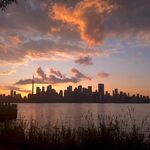MrSocky
New Member
I've only noticed Northern Catalpa as a street tree in one location, where there are 4, in extended planters (3m long, tree in the middle, 2ft off ground).
Their first year was brutal, but they made it.
Since then all 4 have done well.
They are in near ideal conditions and don't have wires overhead.
I haven't seen Catalpa often enough to judge the brittleness issue.
But its a legitimate concern.
In Maples, I think Norway has been more of a problem than Silver.
But Silvers, if not pruned properly have a tendency to go very multi-stem, which makes them a greater risk for failure of limbs.
The Catalpas I've seen show strong single-stem style growth.
Is that the common natural form (I'll have to do some research); often varietal or hybrid choice is key for such things.
I haven't noticed what their salt tolerance is either. I will research and report back.
I could not agree more with you in regards to the Norway Maple, its issue are multifaceted. Its overtly shady canopy and thick root system that create dark mud laden area surrounding it are bad enough. Acknowledging its relatively short lifespan of roughly 60 years in our region that culminates with dramatic death of shattering through a weak crotch that has rotted out make it a truly awful tree to have in your yard. And this excludes the ecological nightmare is poses as an invasive species, this article below covers the topic in depth discussing the seriousness of this issue, and how we need to acknowledge that not all trees are good trees.
https://www.cbc.ca/news/canada/toronto/toronto-city-council-ravine-strategy-tree-inventory-1.4320431
A favourite street tree of mine that has recently been getting more popular is the Tulip tree. Its relatively native, being from the Carolinian forest(As you noted, Toronto is a transitional area for forest types, which leaves us with a lengthy list of nativish trees). Its fast growing, beautiful flowers, and upright nature make it a wonderful large shade tree. Its wood is lightweight and not the strongest in wind storms either though, and its pollution tolerance is weak at best therefore negating its use in our "tree coffins".
Unfortunately we are still making the same mistakes of the past, over planting certain species that are in fashion. The Autumn Blaze maple(acer x freemanii 'Jeffersred') is one that is planted at stunningly high rates by landscapers right now. Its fast growth, red fall colour and bullet proof resistance to drought and pollution make it an obvious choice for many homeowners. Thankfully towns have begun to embrace diversity with their plantings, hopefully this mentality will one day make its way to the average homeowner.





